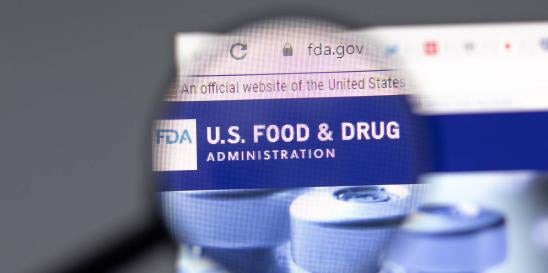On March 5, 2024, the Food and Drug Administration (FDA) issued its “Dietary Supplements: New Dietary Ingredient Notification Procedures and Timeframes: Guidance for Industry” (“Final Guidance”). The purpose of the Final Guidance is to assist manufacturers and distributors of new dietary ingredients (“NDIs”) and dietary supplements in preparing and submitting new dietary ingredient notifications (“NDINs”) to the FDA.
The Final Guidance finalizes Section V, “NDI Notification Procedures and Timeframes,” of a 2016 revised Draft Guidance (“Draft Guidance”) on the topic and was drafted in direct response to comments recommending that the FDA divide sections for ease of use. (The extensive Draft Guidance, updated in March 2024 to refer to the Final Guidance, may be found at the link above or on the FDA’s website.)
“The FDA understands the importance of providing the agency’s thinking on the topic of NDINs and related issues and plans to prioritize finalizing other parts of the 2016 revised draft guidance as the agency completes its review and analysis of those sections,” the FDA wrote in a Constituent Update on March 5, 2024.
Industry has been quick to react to the Final Guidance. The Natural Products Association (“NPA”), for one, called the Final Guidance “a major disappointment,” in a news release the same day—noting that it focused on “frequently asked questions about the NDI submission and review process, and stems from draft guidance dating back to July 2011.”
“This process is critical for consumer safety, industry innovation, and the regulatory regime, and by all counts, this guidance misses the mark,” said Daniel Fabricant, Ph.D., president and CEO of NPA. “It is a giant nothingburger that could very well weaken the great value of the NDI process because it leaves so many questions unanswered.”
Fabricant pulled no punches. “Yet once again, the agency has chosen to kick the can down the road on the decisions that are most important to consumers and to the market,” he said, calling for a “tangible plan” for domestic enforcement of NDI guidelines. “Too many companies,” he said, are marketing their products without an NDIN because another firm has done the work of submitting one—while covering the costs.
Other industry players, such as the American Herbal Products Association’s (“AHPA”) Michael McGuffin, were “pleased to see” the FDA’s action. McGuffin said in an AHPA blog post on March 6, 2024, that the Final Guidance “appears to be clarifying rather than confusing.”
The Specifics
As the Final Guidance shares significant substance, a breakdown of the basics may be useful:
The Requirement
The federal Food, Drug, and Cosmetic Act (“FD&C Act”), 21 U.S.C. § 350(b)(a)(2), requires that a manufacturer or distributor of an NDI that has not been present in the food supply prior to the enrollment of the Dietary Supplement Health and Education Act of 1994 as an article used for food, or of a dietary supplement that contains the NDI, must submit a premarket safety notification to FDA at least seventy-five (75) days before introducing the product into interstate commerce.
This requirement applies unless the NDI and any other dietary ingredients in the dietary supplement “have been present in the food supply as an article used for food in a form in which the food has not been chemically altered” (21 U.S.C. § 350(b)(a)(1)).
Definitions
A Dietary Ingredient, according to section 201(ff)(1) of the FD&C Act, is defined as any one of the following:
- A vitamin;
- A mineral;
- An herb or other botanical;
- An amino acid;
- A dietary substance “for use by man to supplement the diet by increasing the total dietary intake”; or
- A concentrate, metabolite, constituent, extract, or combination of any dietary ingredient from the proceeding categories.
1994 Cutoff Date
An NDI is defined in the FD&C Act as a “dietary ingredient that was not marketed in the United States” before October 15, 1994. Dietary ingredients marketed in the United States before that date are not NDIs and do not require an NDIN.
What to Include in an NDIN
According to the Final Guidance, “[a]n NDIN must contain the information, including any citation to published articles, that provides the basis on which the manufacturer or distributor of the NDI or dietary supplement (the notifier) has concluded that the dietary supplement containing the NDI will reasonably be expected to be safe[.]” If premarket notification is not submitted to the FDA, the dietary supplement containing the NDI is deemed to be adulterated under the FD&C Act; even if it is submitted, the dietary supplement is deemed adulterated “unless there is a history of use or other evidence of safety establishing that the NDI, when used under the conditions recommended or suggested in the labeling of the dietary supplement, will reasonably be expected to be safe[.]”
The NDIN regulation at 21 C.F.R. § 190.6 requires:
- The name and complete address of the manufacturer or distributor;
- The name of the NDI that is the subject of the premarket notification (include the Latin binomial name and the author/scientist citation for botanicals);
- A description of the dietary supplement(s) containing the NDI. These include
- The level of NDI in the dietary supplement; and
- The conditions of use recommended or suggested in the labelling of the dietary supplement, or if none, the ordinary conditions of use of the supplement;
- The history of use or other evidence of safety establishing that the dietary ingredient, when used under the conditions recommended or suggested in the labeling of the dietary supplement, will reasonably be expected to be safe;
- The signature of a person authorized by the manufacturer or distributor to sign the notification on its behalf.
Who Must Submit an NDIN
The Final Guidance states that “[e]ither the manufacturer or distributor of a dietary supplement that contains an NDI, or the manufacturer or distributor of the NDI, must notify FDA at least 75 days before marketing the article in the United States, unless the NDI has been present in the food supply as an article used for food in a form in which the food has not been chemically altered[.]”
How to Present
Per the Final Guidance, manufacturers and distributors may submit a single NDIN containing safety data for a range of conditions of use and that covers multiple products. For paper submissions, “the NDIN should be well organized to facilitate an efficient and timely FDA review”—and “organized in sections, with continuous and consecutive pagination throughout the notification.”
How to Describe the NDI
The NDIN should:
- Specify which of the dietary ingredient categories in section 201(ff)(1) of the FD&C Act the NDI belongs, explaining the basis for the conclusion;
- Describe the manufacturing process used to make the NDI, including process controls;
- Describe the physical properties and chemical or molecular composition and structure of the NDI;
- Include a specification sheet (preferably in table form) describing the critical identity and safety attributes of the NDI, including purity, strength, and the identities and levels of any impurities and contaminants.
How to Describe the Dietary Supplement in Which the NDI will be Used?
The NDIN should contain a description of the dietary supplement in which the NDI will be used, including:
- The level of the NDI in the dietary supplement per serving;
- The identity and level of any other dietary ingredients and non-dietary ingredients (binders and fillers) in the dietary supplement per serving;
- A description of the manufacturing process of the dietary supplement, including process controls;
- A specification sheet for the dietary supplement that describes its critical safety attributes; and
- The conditions of use recommended or suggested in the labeling of the dietary supplement, or if none, a discussion of the ordinary conditions of use of the dietary supplement. Conditions of use include:
- Serving form (tablet, capsule, powder, liquid)
- Serving size (weight or volumetric measure per serving);
- Frequency of use (number of servings per day and interval);
- Duration of use;
- Instructions for use;
- Target population;
- Excluded populations (if any); and
- Any other restrictions on use.
Safety Narrative
An NDIN should include a dietary supplement safety narrative containing an objective evaluation of the history of use or other evidence of safety cited in the notification, along with an explanation of how the evidence of safety provides a basis to conclude that the dietary supplement containing the NDI, when used under the conditions described in the NDIN, will reasonably be expected to be safe.
Other information in the Final Guidance relates to electronic submissions; paper copies; submission sites/ physical address; listing published literature and other scientific information; copies of cited publications, material published in other languages; describing unpublished scientific work; the provision of raw data; trade secret or confidential commercial information (CCI); signature and contact information.
What Should Not Be Included
“An NDIN should not contain general or extraneous information.”
After Filing
The Final Guidance indicates that the date when the FDA receives a complete NDIN is the date of that notification’s filing and the start of the 75-day premarket review period (during which the manufacturer or distributor of a dietary supplement containing an NDI may not market that dietary supplement). After review, the FDA will send a response that may be:
- A letter of acknowledgment without objection;
- A letter listing deficiencies that make the NDIN incomplete under 21 C.F.R. § 190.6;
- An objection letter raising concerns with the adequacy of the identity information or safety information; and/or
- Letter raising other regulatory issues with the ingredient or product.
Confidentiality
The NDIN and the FDA’s response letter will be kept confidential for ninety (90) days after the filing date before being placed on public display, except for information that is trade secret or CCI.
Meetings
Notifiers may also request a meeting with the FDA to request feedback on a planned or potential NDIN.
Appendix
An appendix to the Final Guidance contains a recommended template for organizing an NDIN submitted on paper.
Takeaways
Although denoted as “final” the FDA reminds interested parties that the agency’s guidance documents—including this Final Guidance—do not establish legally enforceable responsibilities. As noted above, the Final Guidance describes the agency’s current thinking on a topic only, and as such should be viewed as recommendations from the agency unless specific regulatory or statutory requirements are cited.
The public is still encouraged to submit electronic or written comments related to this Final Guidance—electronically or by mail—at any time, identified with the docket number FDA-2023-D-5280.
Epstein Becker Green Staff Attorney Ann W. Parks contributed to the preparation of this post.






 i
i


